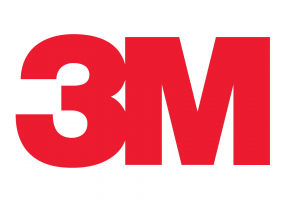Office Space Metrics vs. Co-Creation of Communities: Have You Evolved?
4.11.2015Company: Amcham
With increased mobility, technological advances and an ever-increasing pressure on cost efficiency and speed to market, creating activity-based working environments have come a long way from the drive for densification after the financial crisis. So what was foreseen by some leading visionaries, as human-centric office design, is slowly become reality 40 years on. Now that tomorrow has finally arrived, it is fast becoming yesterday!
What has fundamentally changed the landscape is the increasing diversity in the ‘workforce’. This changing workforce is characterized by greater demand for autonomy and self-fulfillment. This leads to an increasing number of spin-offs, start-ups and contractual labour models for highly skilled workers of all generations and expertise.
“A sense of community and belonging is a basic human need, and the cross-fertilization fostered in these new workspace models is deemed as a highly valuable, if not survival-critical, asset. This trend has given a new spin to the design of workplaces”, says Claudia Hamm, Head of EMEA Workplace strategy at JLL, and continues: “Like BYOD crept into the workplace through user demand, CYOW (Chose Your Own Workplace) will become the norm.”
This new trajectory bears an enormous potential for municipalities, investors, landlords and corporate occupiers to collaborate for a more sustainable future in real estate. In a quest to move from defender of status quo to proactive disruptor, organisations are leaving the well-known, age-old path of procuring and providing traditional office space in 3 to 5 year rental periods.
“No longer confined to the distant world of Silicon Valley, we are witnessing the emergence of new multi-purpose concepts around shared memberships and co-creative communities. These models don’t only call for a new approach in terms of real estate procurement, but require an expanded team of experts beyond the traditional landlord-broker-tenant triangle. Techies, experience designers, hospitality experts, branding gurus and urban planners are just some of the types of contributors you will need to think of when setting out into these unchartered waters,” explains Claudia Hamm.
The key principles that need to be considered are:
Concept philosophy (The Why)
As with any project the starting point should be a clear vision. Defining what will make this shared model different and successful requires blue sky courage and considerable thinking outside the (office) box. What are the main drivers behind the concept, what business challenges and disruptions is the concept addressing and what will make the space a destination of choice - these are some of the core questions that will need to be addressed.
Community (The Who)
If the intent is to bring a diverse and energizing mix of people together, it is vitally important to clearly understand the demographics and requirements. Who will be part of the community over and above your employees, what activities will take place and what is the mutual benefit of coming together? This needs to be understood, and a ‘desired user experience’ map is one way of achieving this.
Space & Design (The What)
Only once the desired value-add and experience have been clearly mapped out is it time to turn the attention towards the physical and technological fit-out. Spatial and design aspects can then act as a lever to foster and encourage the desired outcome. Brand expression will also play a key role at this stage, as the space itself will need to tell a cohesive and compelling story.
In Summary
As my introduction states, it is time to rejuvenate what was traditionally known as ‘Workplace Strategy’. As sensor technology, Artificial Intelligence and the Internet of Things are transforming work and make buildings and places smarter it is time we follow suit.
“We are no longer confined to bricks and mortar, access limitations and office design. We are entering a very accelerated and truly exciting post-industrial era and in my view it is about ‘Community Design’, ‘Engagement & Experience Design’ and ultimately about ‘symbiosis’ - the eco-system of the built environment and humans for mutual benefit,” concludes Claudia Hamm.







